


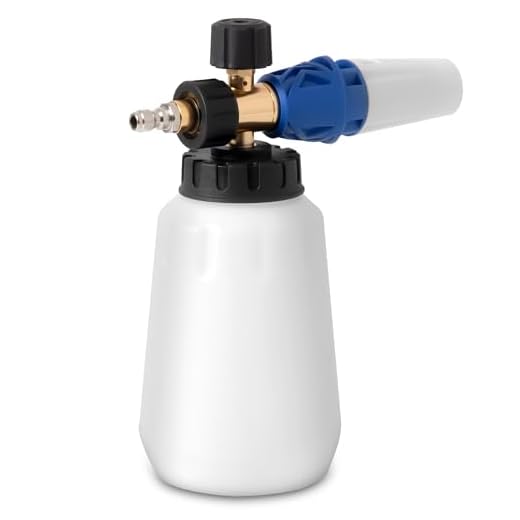
For optimal results in your cleaning tasks, consider integrating a system that utilises a chemical injection mechanism. This feature enhances the effectiveness of your cleaning by allowing detergents to be mixed with pressurised water, creating a powerful solution that tackles tough stains and grime.
The interaction within this system starts with a dual nozzle design. As water flows through, a venturi effect draws the cleaning agent into the stream. This process is crucial, as it ensures a consistent and controlled mixture of water and detergent, resulting in an unbeatable cleaning power. The use of adjustable settings allows for precise control over the concentration of the solution, catering to various surfaces and levels of dirt.
When applying this mixture, the technique of spraying at the right angle and distance maximises the cleaning effect. Begin with wider sprays for larger areas to quickly cover the surface, then switch to a narrower focus for stubborn spots. This strategy optimises the use of both water and cleaning agents, enhancing efficiency while minimising waste.
Cleaning solutions specifically designed for this technology are often more effective than traditional methods. Look for products formulated to work with your system, ensuring compatibility and maximising performance. Investing in quality agents not only improves results but can also prolong the lifespan of your equipment by protecting it from damage associated with inferior products.
Understanding the Basics of Pressure Washer Chemical Jets

To achieve optimal cleaning results, selecting the right nozzle and corresponding detergent is critical. A low-pressure nozzle, typically the black one, is ideal for applying soap or cleaning agents. This nozzle creates a fan spray that ensures an even distribution, allowing the solution to penetrate surfaces effectively.
The system relies on a siphoning method, allowing cleaning solutions to be mixed with water. The soap is drawn into the flow of water as it is expelled from the machine, creating a frothy blend that clings to vertical surfaces for a longer duration. This contact time is essential, as it enhances the solution’s ability to break down grime and stains.
Application Techniques for Maximum Efficiency
.jpg)
When using the detergent application, it’s essential to begin at the bottom of the surface and move upwards. This technique prevents streaks and ensures that dirt flows downward as the solution is rinsed away later. Once the soap has settled on the surface for the recommended time, switch to a high-pressure nozzle to rinse off the residues thoroughly. This dual-action approach–applying and then rinsing–ensures an effective clean.
Choosing the Right Solutions
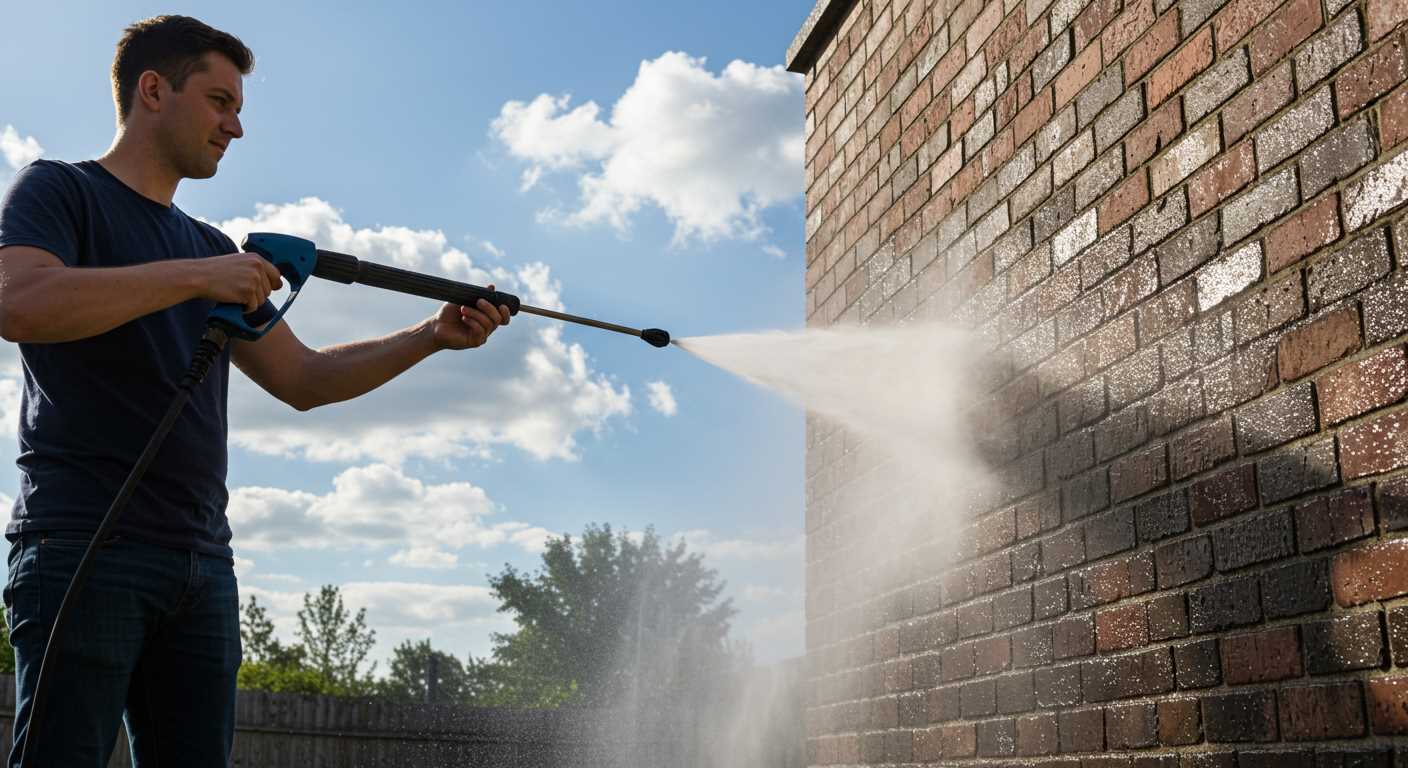
Different detergents serve unique purposes, from degreasers for automotive applications to eco-friendly solutions for everyday cleaning. Always ensure the selected cleaning agents are compatible with your machine. Using the wrong type can lead to equipment damage or decreased cleaning effectiveness. Reading the manufacturer’s guidelines will provide clarity on this aspect.
Types of Chemicals Used in Pressure Washing
Choosing the right substances for effective cleaning is crucial. Common categories of solutions include detergents, disinfectants, descalers, and degreasers. Each serves a unique purpose.
Detergents are formulated for general cleaning tasks. They break down dirt and grime, making surfaces easier to clean. When selecting a detergent, consider formulations designed specifically for different materials, such as wood, metal, or masonry.
Disinfectants are essential when the removal of bacteria and viruses is necessary. These solutions not only clean but also sanitise surfaces. Look for products that state their efficacy against specific pathogens to ensure safety.
Descalers target mineral deposits, such as limescale and calcium build-up. They are particularly useful in areas with hard water. A descaler should be compatible with the surfaces being treated to avoid damage.
De-greasers are ideal for removing oily substances, making them perfect for garage floors and kitchens. Check if the degreaser is suitable for the material you’ll be cleaning to achieve the best results.
Always follow manufacturer guidelines on dilution ratios and application techniques. Incompatibilities can lead to damage or ineffective cleaning. Testing a small area before widespread application can prevent mishaps.
How to Properly Mix Chemicals for Optimal Performance
To achieve the best results, accurately measure and dilute the substances according to the manufacturer’s recommendations. Start with precise ratios that match the intended application, ensuring the right amount is combined for effective performance.
- Use Clean Containers: Always mix in clean, dedicated containers. This avoids cross-contamination that could diminish effectiveness.
- Order of Mixing: Always add the concentrate to water, not the other way around. This prevents splashing and ensures an even mix.
- Stir Thoroughly: Use a non-reactive stirrer to combine the solution completely, avoiding any unmixed areas.
- Test First: If using a new mixture, test it on a small area to confirm that it delivers the desired outcome without damaging the surface.
- Wear Protective Gear: Always use gloves and goggles when handling concentrated solutions to safeguard against splashes or spills.
- Storage: Store any unused mixture in a cool, dry place with a tight seal, labelled clearly with content and date.
Adhering to these mixing practices helps maximise the cleaning efficiency while maintaining safety. Consistent results rely upon careful preparation and management of materials involved in the process.
Adjusting Chemical Jet Settings on Your Pressure Washer
To achieve optimal results, I recommend starting with the correct setting on your unit. Select a low-pressure option to ensure that the solution is applied gently, allowing for even distribution without causing damage to surfaces.
Fine-tune the chemical ratio dial to match the concentration level required for the task. For lighter cleaning jobs, a 1:10 dilution ratio typically suffices, while heavier stains may necessitate a stronger mixture. Always refer to the manufacturer’s guidelines for specifics regarding compatibility and ideal ratios.
Adjust the spray nozzle type based on the area to be cleaned. A wider fan spray nozzle is preferable for large surfaces, as it promotes even coverage and prevents wasting chemicals. For detailed work or tight spaces, a narrow lance will provide precision application.
Remember to prime the system by running it for a short period before applying the mixture broadly. This ensures that the right amount of solution reaches the surface right from the start, enhancing cleaning efficiency. Keep an eye on the solution feed, as a clog could affect the pressure and output. Regular maintenance of the injector and hoses is vital to avoid these issues.
Lastly, after adjusting the settings, conduct a test on a small, inconspicuous area to assess the effectiveness of the mixture and ensure that there are no adverse reactions with the surface being treated. This practice can save you time and prevent possible damage.
Safety Precautions When Using Chemicals with Water Hoses
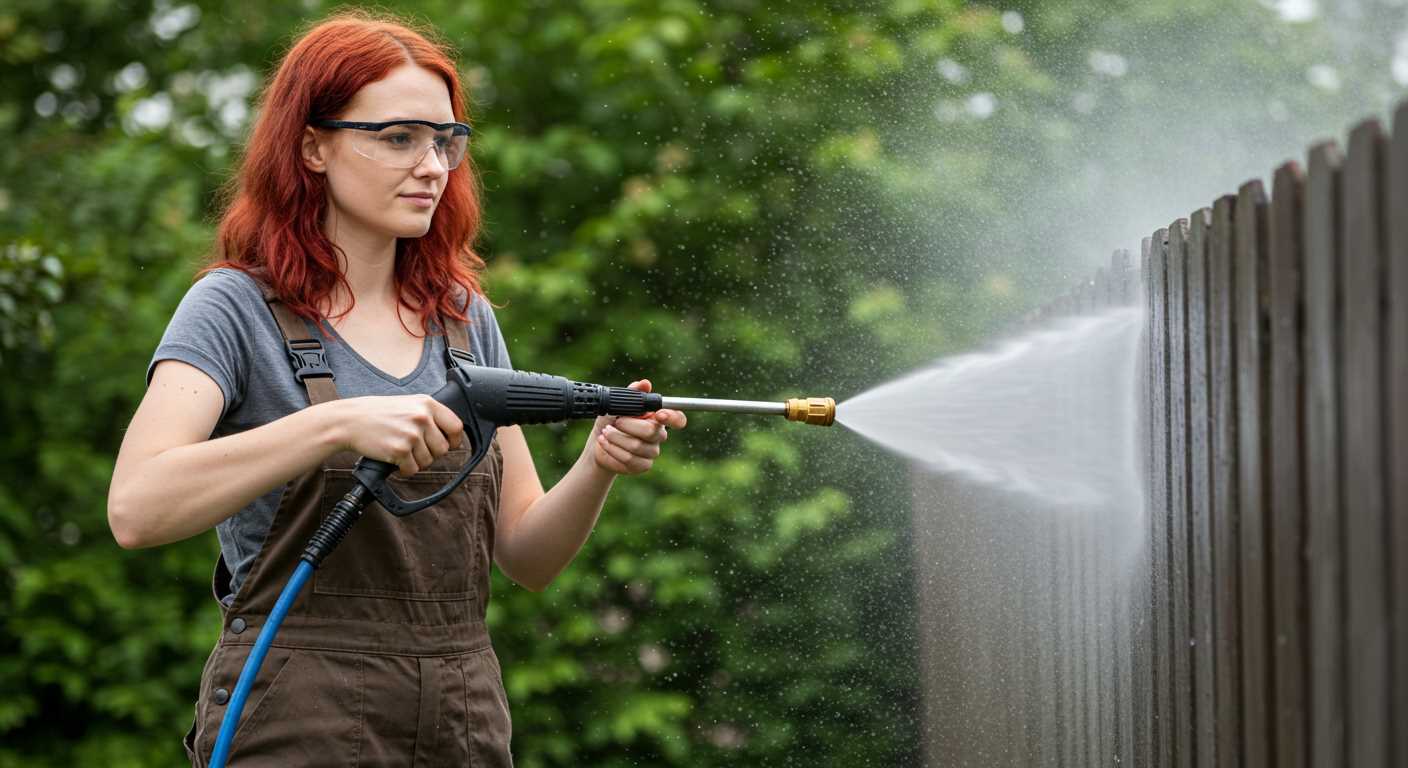
Always wear appropriate personal protective equipment (PPE) including gloves, goggles, and long sleeves to minimise exposure to hazardous substances. This is non-negotiable; any skin contact can lead to serious irritation or allergic reactions.
Ventilation and Environment
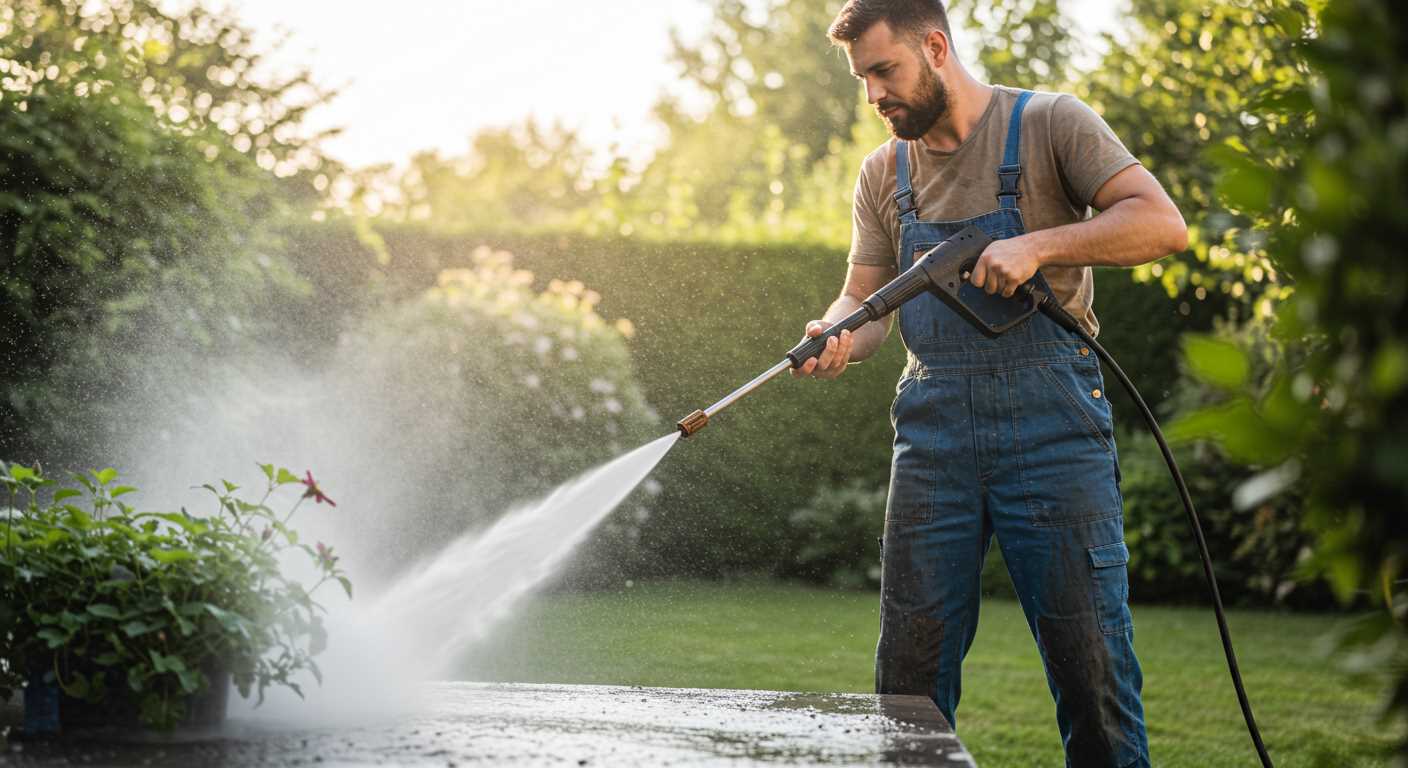
Ensure the area is well-ventilated, especially when using potent cleaning agents. Avoid working in confined spaces where fumes can accumulate and pose health risks.
Storage and Handling of Substances
Store all products in their original containers with clear labels. Secure them out of children’s reach and away from direct sunlight. Follow the manufacturer’s guidelines for storage temperatures. When mixing compounds, always add the chemical to water, not the other way around, to prevent vigorous reactions that can lead to splashes or sprays.
| Safety Tip | Description |
|---|---|
| Proper PPE | Utilise gloves, goggles, and protective clothing |
| Ventilation | Work in open, airy spaces to reduce fume inhalation |
| Safe Storage | Keep chemicals in original containers and securely stored |
| Mixing Precautions | Always add the agent to water to avoid reactions |
Keep a neutralising agent or a bucket of clean water nearby to rinse off any spills on skin or clothing. If an accidental mix occurs, follow the emergency instructions provided on the product label or safety data sheet.
In case of eye contact, rinse immediately with water for at least 15 minutes and seek medical attention. For skin exposure, remove contaminated clothing and wash the affected area thoroughly. A first-aid kit should be readily available during operations.
Stay informed about the potential hazards of each substance used. Always review the safety data sheets for specific handling instructions and emergency protocols. This diligence helps in avoiding workplace accidents and ensures effective and safe cleaning practices.
Common Issues and Solutions with Chemical Jets
If you notice inconsistent flow from the nozzle, check for clogs in the injection system. Debris can easily disrupt the flow. Clear any blockages in the filter or hose.
Another prevalent problem is improper mixing of solutions, leading to insufficient cleaning power. Always follow recommended dilution ratios on the product label for optimal outcomes.
If the detergent tank is empty, inspect the supply line for kinks or restrictions. Any bends can hinder the flow of solutions and render the unit less effective.
In cases where the solution doesn’t seem to be pulling from the tank, ensure that the settings are appropriate for chemical use. Adjust the mixture control knob accordingly to enhance intake.
It’s common to face issues with chemical residue left behind after rinsing. Regular maintenance of the equipment and proper rinsing techniques can help avoid this. Always flush the system with clean water after use to prevent build-up.
For units that are leaking or not holding pressure during chemical application, examine seals and connections for wear. Replacing any damaged components will help restore functionality.
If you experience excessive foaming, reduce the dosage of detergent being used. Some formulations are more concentrated than others and require careful adjustment.
In summary, being aware of these common challenges can help maintain the performance of your unit and improve overall cleaning effectiveness. Regular checks and mindful adjustments go a long way in resolving issues.
Maintaining Your Pressure Washer’s Chemical System
Consistent upkeep of the detergent mechanism is key to prolonging the lifespan of the equipment and achieving optimal cleaning outcomes. Regularly inspect and clean the chemical pick-up tube; any blockages can disrupt the flow and diminish performance.
Daily Maintenance Tasks
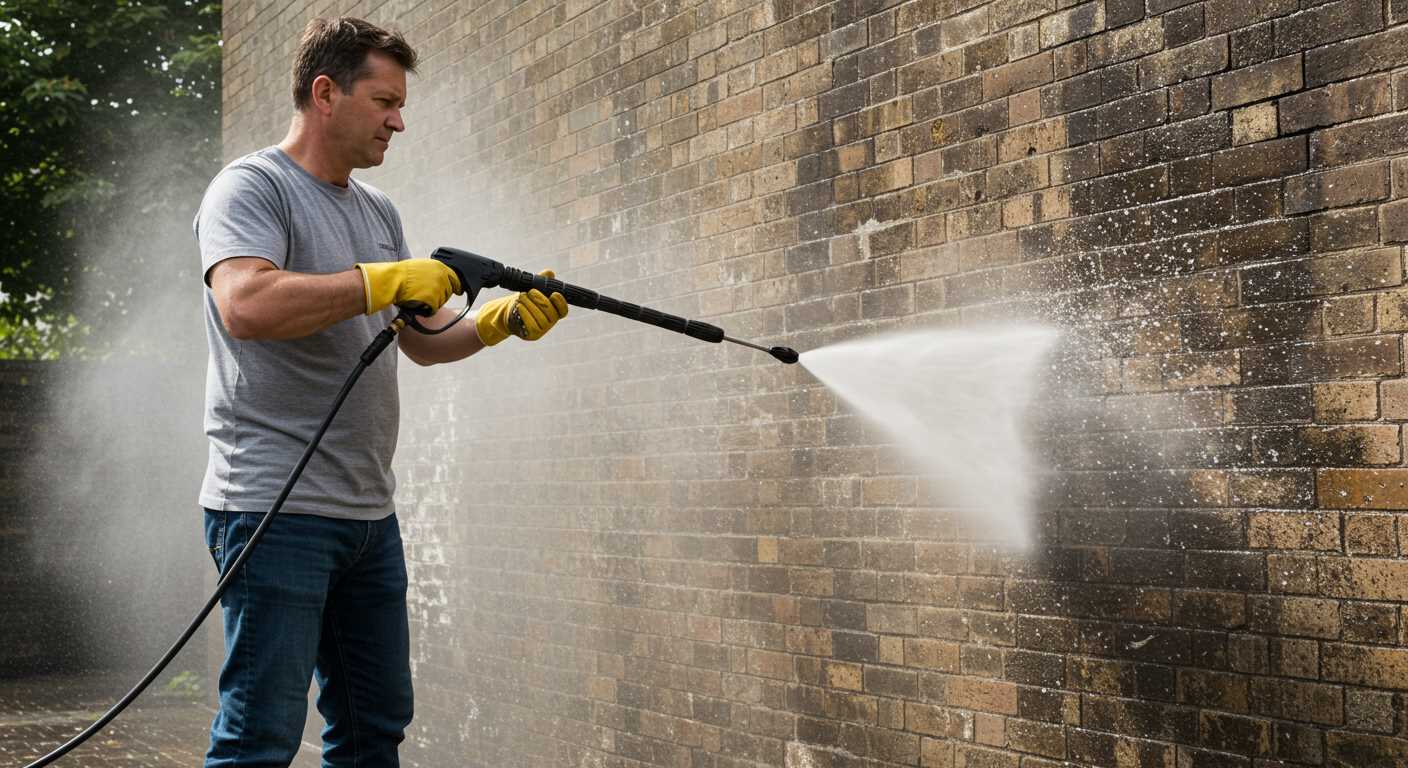
- Flush the system with water after each use to prevent chemical residues from hardening inside the tubes.
- Clean the filter screen to avoid clogs.
- Verify the integrity of hoses and connections to prevent leaks.
Seasonal Maintenance Actions
- Conduct a thorough inspection of all components for wear and tear, replacing any damaged parts promptly.
- Store chemicals safely, in a cool, dry place, ensuring they remain stable and effective over time.
- Test the pressure adjustment settings periodically to ensure they align with the manufacturer’s specifications.
Follow these recommendations and your unit’s cleaning capabilities will remain strong throughout its use. Regular monitoring reduces downtime and enhances overall functionality.







